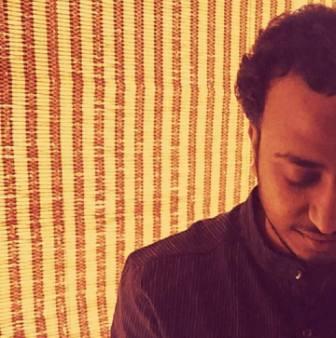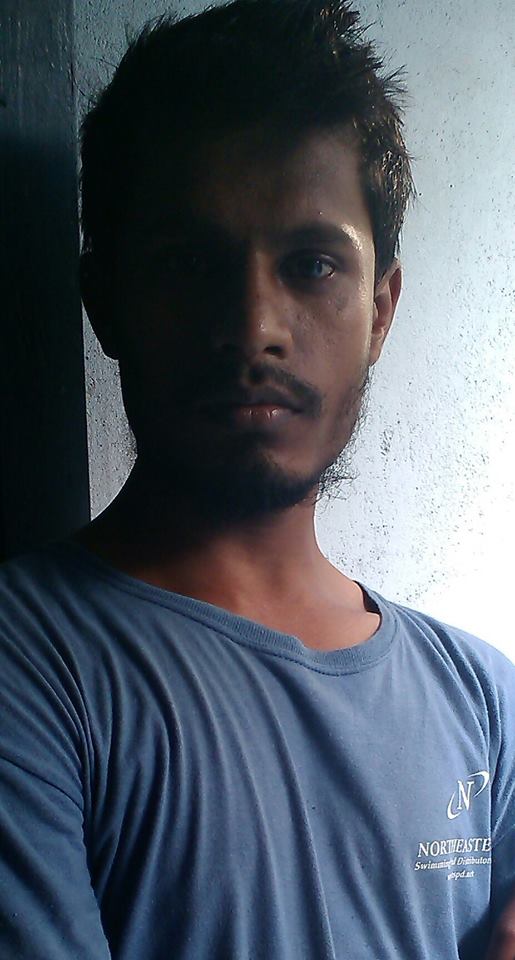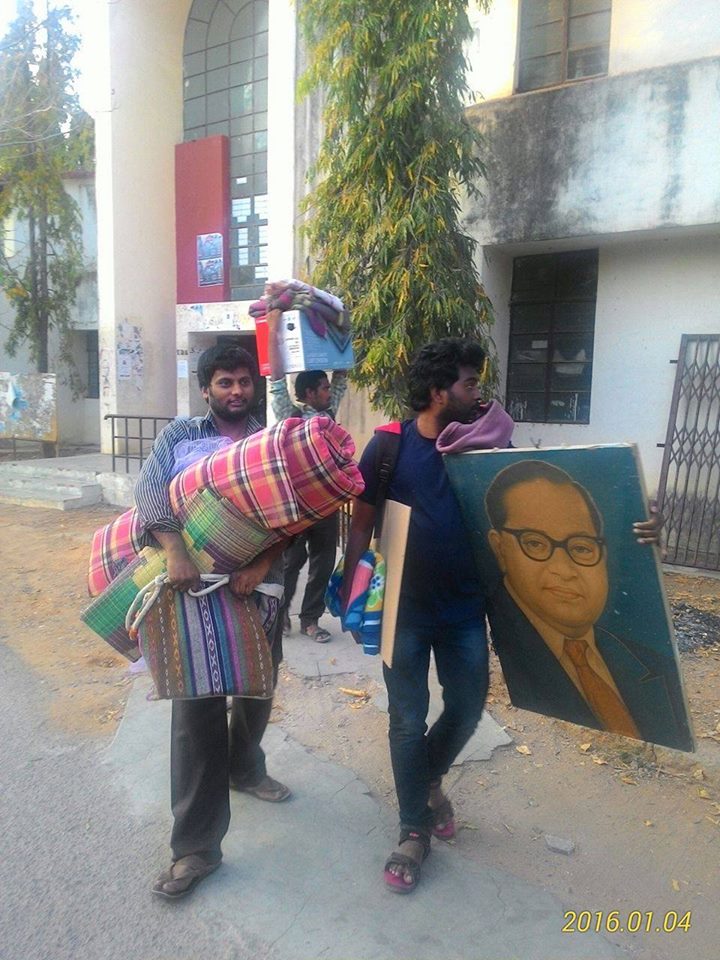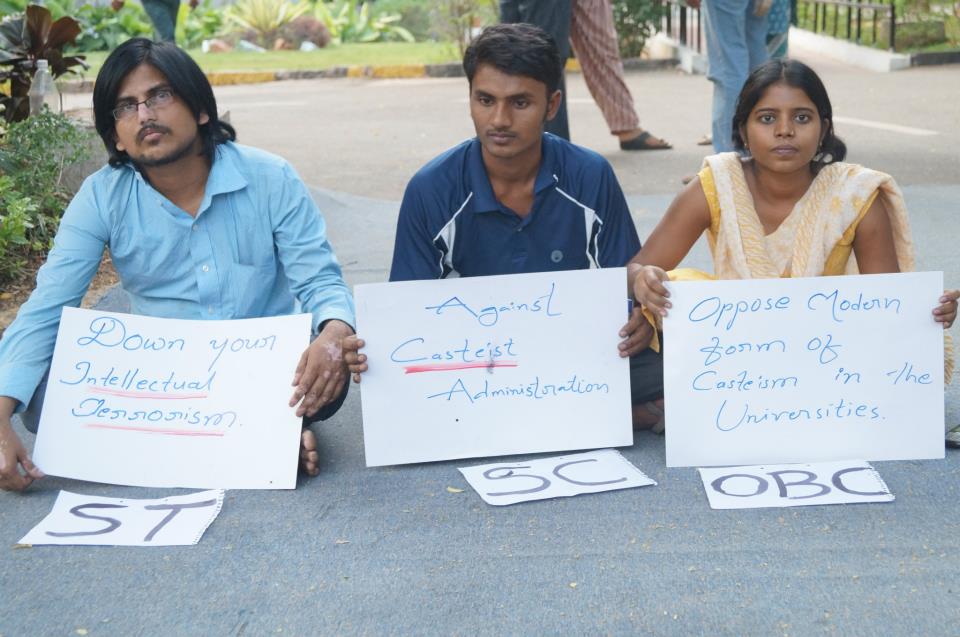Koonal Duggal
 I am writing this public note in the light of a recent incident of casteism that I, along with others, have faced from the organisers of the Cultural Studies Workshop at the Centre for Studies in Social Sciences, Kolkata (CSSSC henceforth). The call for participation in the workshop titled ‘Cultures of Violence’ highlighted that “Priority will be given to students from dalit, tribal and minority backgrounds.”However, when it came to providing accommodation to the selected participants the workshop organisers emailed a list to us, which contained the names of the participants, their permanent addresses and the caste category they belonged to without reflecting on the implications of such division where they foregrounded the caste of three dalit participants as SC, while the rest of the twenty six participants’ (presumably belonging to the general category) caste was left blank or was marked as N. A. (Not Applicable).
I am writing this public note in the light of a recent incident of casteism that I, along with others, have faced from the organisers of the Cultural Studies Workshop at the Centre for Studies in Social Sciences, Kolkata (CSSSC henceforth). The call for participation in the workshop titled ‘Cultures of Violence’ highlighted that “Priority will be given to students from dalit, tribal and minority backgrounds.”However, when it came to providing accommodation to the selected participants the workshop organisers emailed a list to us, which contained the names of the participants, their permanent addresses and the caste category they belonged to without reflecting on the implications of such division where they foregrounded the caste of three dalit participants as SC, while the rest of the twenty six participants’ (presumably belonging to the general category) caste was left blank or was marked as N. A. (Not Applicable).
With this recent incident of caste discrimination I would also like to reflect upon how casteism works in the reputed institution of CSSSC where I was doing my MPhil. And by narrating my experience with this ‘reputed’ institution I would like to assert that I do not see this recent incident as a ‘mere’ technical fault or exception. In fact, I see it as a historical norm. In addition to the ongoing discourse around the conditions and nature of caste discrimination and it’s functioning in the institutions of higher education after the suicide of Rohith Vemula where the experiences of dalit students (those who have/had been discriminated in such institutions or those who have been institutionally murdered in the process of such discrimination and humiliation) has also given me the courage and urgency to share my experience in CSSSC in the public, which I had earlier only spoken about in private.
I joined the MPhil course at CSSSC in the year 2009 and I must admit that the initial moments were filled with the excitement of being able to study in an institution where some of the finest scholars teach. And I feel that a part of excitement was also because of the shift that I was making from the discipline of Art History to that of Social Sciences and because I was getting back to academics after a year of working at IIT Kanpur, where I was also offered to join the PhD programme in Humanities and Social Sciences. However, after clearing the Junior Research Fellowship (JRF henceforth) exam, conducted by UGC, I decided to join CSSSC where a two year MPhil Programme had just started in the year 2009.
A month after completing the interview and admission procedures, I had found accommodation and classes had begun, when in September 2009, I was called in to the office of the MPhil Programme coordinator Mr. P.K. Sengupta. He was accompanied by Prof. Sibaji Bandyopadhyay and they were in the middle of a conversation regarding technicalities in the processing of the JRF fellowship. To my utter discomfort and disbelief, Prof. Bandyopadhyay asked me “Are you from the SC category?”, to which I said, “Yes”. He then further asked me as to why I had taken admission in the general category and why I hadn’t instead applied for admission in the reserved category. Filled with amusement I told him that even in my Bachelors and Masters I had studied in the general category.
I was then further interrogated as to which category I had qualified the NET (National Eligibility Test) and JRF examinations in. When I told them that I had written the exams in the reserved category, Prof. Bandyopadhyay and Mr. Sengupta insisted that I should have applied in the reserved category because my JRF certificate would state that I had qualified NET and secured JRF in the reserved category, and that this would present a “contradiction”. Not only was I made to feel that I had broken the sanctity of the general category, but I was also effectively accused of committing an ethical crime by ‘using’ reservation to secure JRF but on the other hand selectively choosing to apply for admission in CSSSC in the general category.
After being humiliated by Prof. Bandyopadhyay and Mr. Sengupta, I shared my experience with a close friend and a teacher who I knew since the time I had been doing my Masters and some non-Bengali, non-Indian classmates and friends in CSSSC. But I never had the courage to share this incident with any faculty from CSSSC because of the unfamiliarity and fear of interrogation and humiliation that I had already undergone. My friend and teacher suggested that I could file a complaint under the SC/ST Atrocities Act against Prof. Bandyopadhyay and Mr. Sengupta, but due to lack of awareness I refrained from it.
Since that incident, I was not only disillusioned and sceptical of the institution in which I was studying, but I was also haunted by the question as to why I was asked about my caste? Did it come from some simple curiosity to know the caste of a non-Bengali person or was it because of my conduct/performance in class? I began to struggle with many such anxieties. Usually one is asked about one’s caste through many ways, whether in renting out a room or to love someone. But I had not imagined that I would be confronted with the caste question in a so-called politically correct and progressive institution and that also by an ‘esteemed’ teacher. The larger society and its various forms of discrimination are very much present in the functionings of CSSSC and that some of its teachers. I suspect that even now they may not realise that asking me about my caste is not just curiosity, or a matter of technicality but a form of casteist violence.
I would also like to assert that I was misled by Prof. Bandyopadhyay and Mr. Sengupta that the JRF certificate would mark out my category, because eventually when I received the certificate, I did not find it mentioned. A semester later, I met Prof. Bandyopadhyay to clarify the necessity of his queries regarding my caste identity, especially since the JRF certificate did not mention it anywhere. I was then told that had I taken admission in the reserved category, they would have not only admitted an extra general category (read meritorious) student, but a reserved category seat would have been filled in the process.
In the 2009-2011 MPhil batch, not even a single reserved category student had been admitted. In a way, Prof. Bandyopadhyay’s view is not different from general upper casteist view where reserved category students are viewed as those who snatch general category’s share. I understood that had there been any admissions in the reserved category, it would have been easier for the institution to show on paper that they had met the requisite governmental formalities of reservation. In short, this would enable CSSSC to project itself as an inclusive institution with one reserved category student as a symbolic trophy to keep their privilege intact and to dispel the image of the institution as an island exclusively meant for meritocratic upper caste elites.
The absence of any reserved category student – despite rendering me as reserved (read inadequately meritorious) within the so-called sacred category of meritorious general students – in the entire batch raised important questions for me. Did a single student not apply for admission in the reserved category? And if so, why? Or did the institution deliberately not take any of them because they were not found to be meritorious enough according to the meritocratic standards of CSSSC? The answer to this question may be found in the complete and total absence of any dalit faculty in the institution. Rather, one should say that despite being a government funded institution CSSSC does not implement reservations in faculty appointments. Moreover, in the Cultural Studies Workshop, 30% participation of dalits, tribals and minorities is said to be encouraged, but from the earlier mentioned list it can be clearly seen that only three SC students out of twenty nine participants with their categories have been selected.
This practice of exhibiting dalits and their participation symbolically as a form of tokenism is nothing but an obnoxious means to project oneself as an inclusive and progressive institution. Considering the history of casteism that I have faced at CSSSC in the mentioned instances, the more recent incident, reflecting the institution’s insensitivity towards dalit students no longer surprises me. This time however, CSSSC’s discrimination was met with serious objections from me and other fellow participants. In my reply dated, 23rd January to the circulated mail on 22nd January 2016 I stated:
“I would like to know why the column of “category” is put along with addresses of participants regarding confirmation of their accommodation? Why my caste identity is listed here in this manner? The N.A. and blank space before the names of other candidates implies that others don’t have caste. I strongly resent this because I find such a practice highly objectionable and casteist. I mentioned my category because you required it for selection purpose. Why this category of caste still important after the selection?”
This objection was followed by four replies from fellow participants expressing similar concerns with a demand for the removal of the column specifying the participants’ caste category – which was never removed. One of the fellow dalit participants among those who objected, Manju E. P., PhD research scholar from Central University of Hyderabad, fittingly wrote in her reply on 27th January
“As I was busy with the ongoing protest in our campus (University of Hyderabad), I couldn’t respond to the mails being circulated around. I completely agree with Koonal. I was wondering what could be the purpose of adding a category column meant for accommodation! It is really disappointing to receive such a mail from a reputed institution like CSSSC. Moreover, we haven’t received an explanation from your part till date!
Ironically, this could be seen as a form of violence where the mail is embedded with caste identities which is unnecessary. What are the implications of adding the caste identities of a few whereas most of the columns were either blank or not applicable?”
We have seen the implications of such forms of violence on dalits. As Rohith Vemula wrote in his suicide letter,”The value of a man was reduced to his immediate identity and nearest possibility. To a vote. To a number. To a thing.”In my experience with CSSSC, I was considered as only a dalit, a mere number who would benefit the institution. The apology from the organisers that came after four days, on 27th January, admitted that the mail they circulated was wrong and it was not meant to make anyone feel unwanted. This does not take away from the fact that such a mistake is way beyond ‘technicalities’. These are the forms of caste discrimination and violence that are practiced in elite institutes of higher education.
I would like to make it clear that being identified as dalit, at least for me, is not the problem, but the manner in which institutions ‘frame’ dalit students as an anomaly and as a mere number is the fundamental problem. And therefore, in this note, I publically declare that I not only refuse to accept the apology from the organisers, but because of my experience with CSSSC, I do not wish to be a mere number in the tokenistic, casteist agendas of the organizers of CSSSC. Having experienced CSSSC’s cultures of violence over the years, I felt it would have been too much of a contradiction for me to participate in their workshop, which is ironically (and not self-reflexively) called “Cultures of Violence”.
~~~
Koonal Duggal is a PhD research scholar in the Department of Cultural Studies, English and Foreign Languages University, Hyderabad. He recently submitted his thesis titled “Crossing Religious Boundaries: Representation, Caste and Identity in Contemporary Punjab”. Currently, he’s teaching Art History in the Department of Fine Arts, S.N School of Art and Communication, University of Hyderabad.










